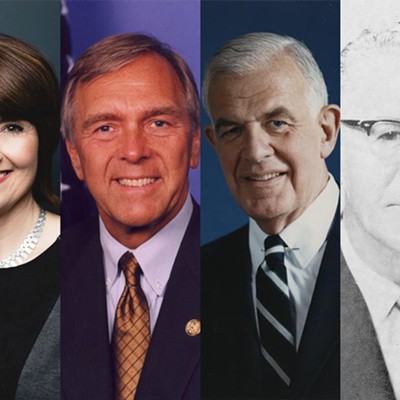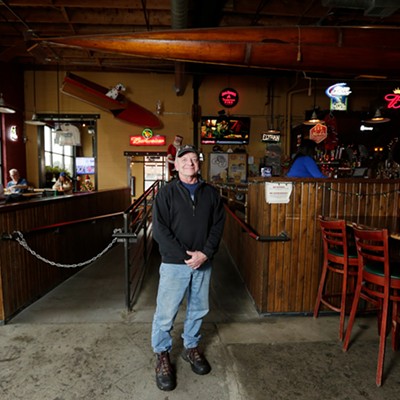I always loved Ansel Adams — his photos, of course, but his autobiography was really inspiring, too. His mountains and valleys seem both etched in stone and vividly present. How does he get the light, the angle, so perfect? That's the secret of any great artist.
So I had to check out his documenting of Japanese-Americans being interned during World War II in the new show at Gonzaga's Jundt Art Museum entitled, "Manzanar: The Wartime Photographs of Ansel Adams."
I first came across the Japanese-American internment camps when we told the life story of Ed Tsutakawa. He and his family were from Seattle but were removed to Minidoka camp in Idaho, and he shared evocative sketches of his sad journey. His father died while they were at Minidoka; he also met his future wife, Hide, there. Despite it all, you couldn't find a better citizen — of America and of Spokane — than the late, great Ed Tsutakawa. And I've also read about the Kooskia work camp, which the University of Idaho has documented — where Japanese-Americans helped carve out U.S. Highway 12 along one of the wildest rivers in the West, the Lochsa.
You don't have to go far in the American West to find reminders of this shameful chapter in our history.
As you walk the exhibit, what hits you is how normal they made their forced confinement up at the north end of California's Owens Valley. There's a photo of the camp's band playing in a dirt field, a lone tree providing a sliver of shade. There's another of internees taking in an art exhibit — of Adams' own Manzanar photos. They had a rigorous school and even elected a mayor. In hard times, especially, we hold on to whatever bits of civilization we can.
While I love Adams' iconic photos, I do sometimes wonder about nature photographers — so much love of nature, so little interest in humanity. "Manzanar" shows another side of Adams — when the time came, he pointed his camera at people to expose injustice.
Adams also found proof of his belief in the redeeming power of nature. Manzanar was a dusty little camp set against a backdrop of spectacular mountains rising up from the plains. Adams thought the setting was crucial, as he put it in his hopeful 1944 book about Manzanar, Born Free and Equal:
"I believe that the acrid splendor of the desert, ringed with towering mountains, has strengthened the spirit of the people of Manzanar," Adams wrote. "The huge vistas and the stern realities of sun and wind and space symbolize the immensity and opportunity of America — perhaps a vital reassurance following the experience of enforced exodus... " ♦
"Manzanar" runs through March 29 at Gonzaga University's Jundt Art Museum. Free.

























